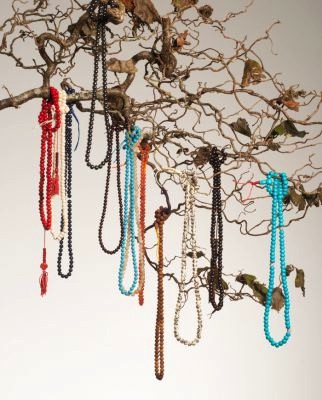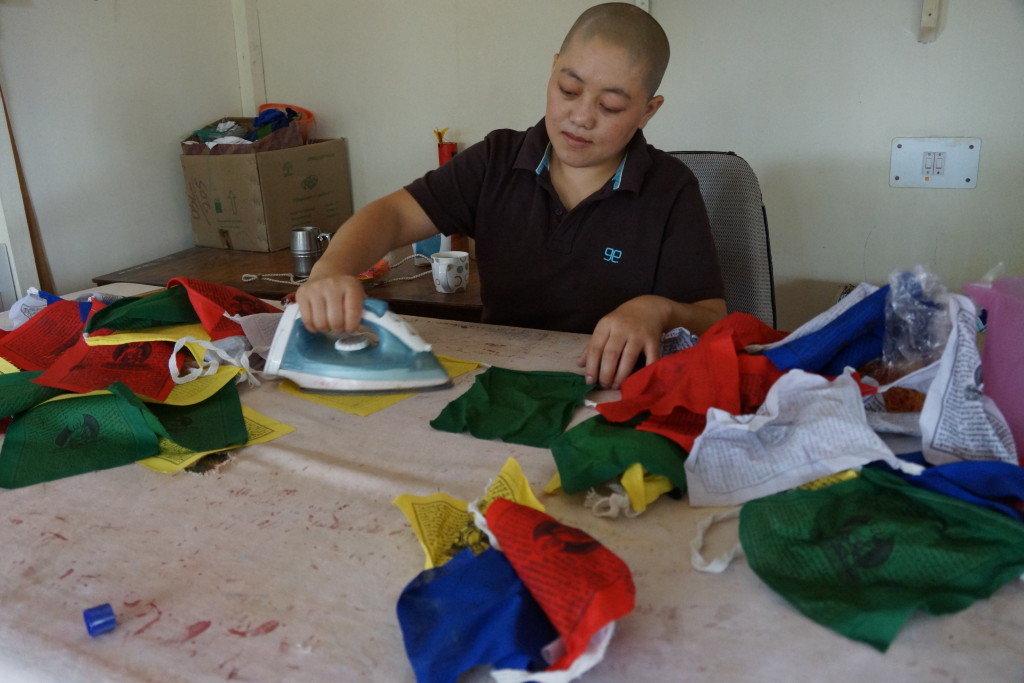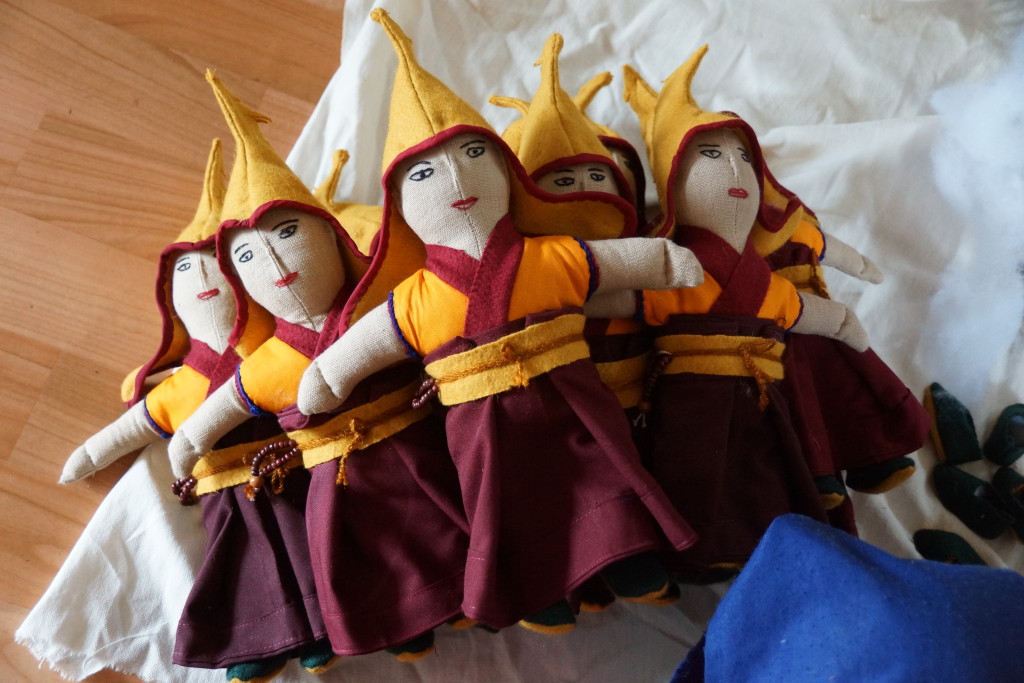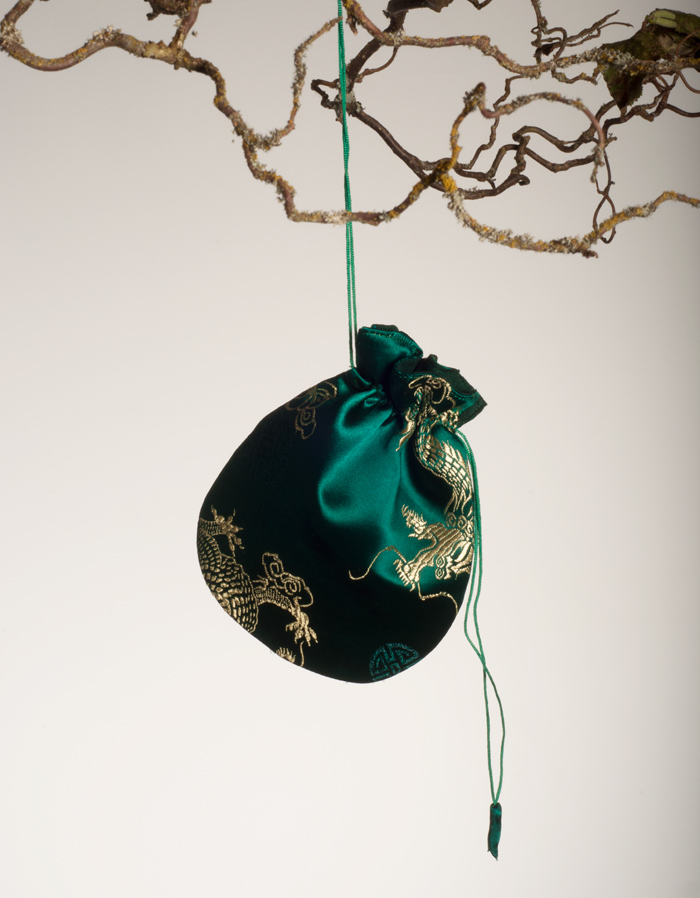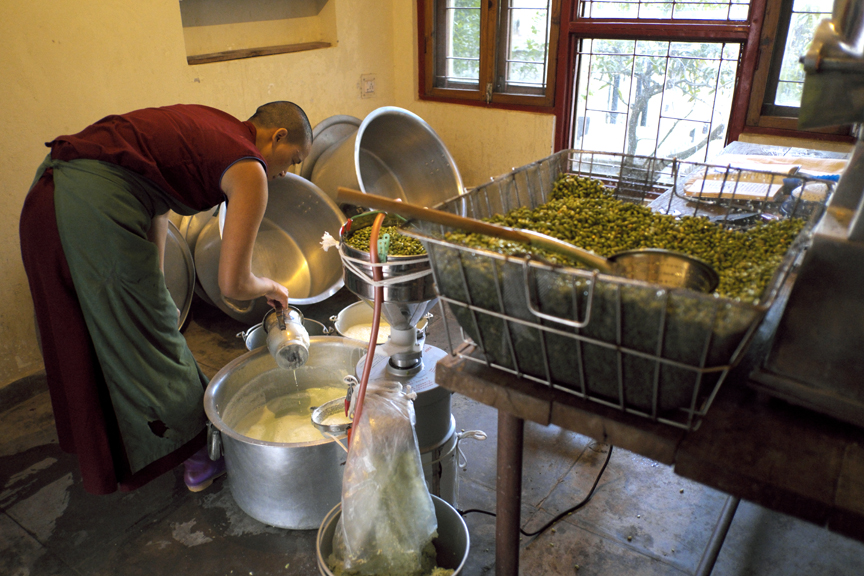We are often asked how to use a Tibetan mala or Tibetan prayer beads. We hope this blog post will answer some common questions about Tibetan malas.
Through the Tibetan Nuns Project online store, we sell long malas and wrist malas made and blessed by Tibetan Buddhist nuns at Dolma Ling Nunnery.
What are Buddhist prayer beads?
Malas or Tibetan Buddhist prayer beads are similar to other prayer beads used in various world religions. Some people have called the mala a Buddhist rosary, but in Tibetan, a mala is called a threngwa (Tibetan ཕྲེང་བ). Mala is a Sanskrit word meaning “garland”. Malas are used to keep track while one recites, chants, or mentally repeats a mantra or the name or names of a deity. Malas are used as a tool to keep count of mantra repetitions. Mantras are spiritual syllables or prayers and are usually repeated many times.
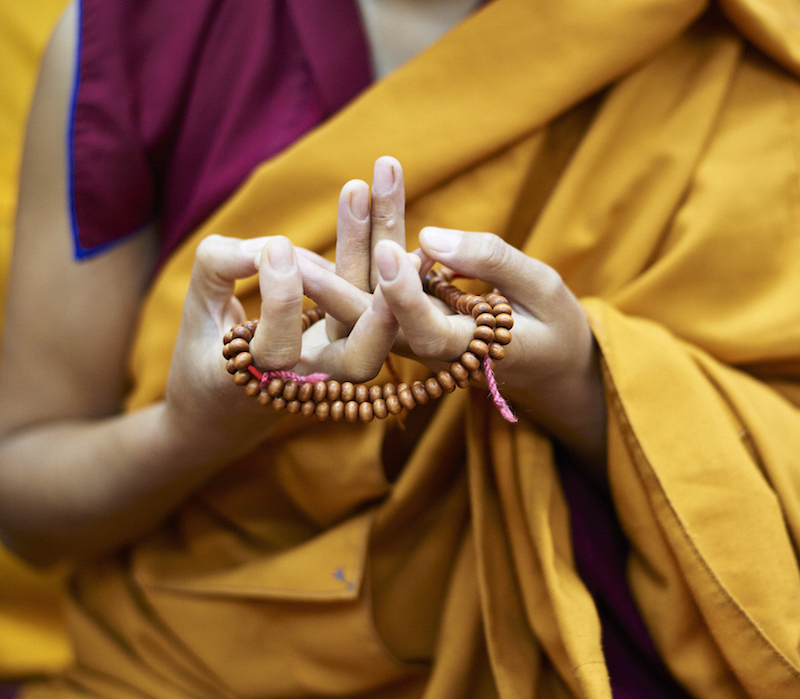
A Tibetan Buddhist nun performs the Mandala Mudra with her mala (Buddhist prayer beads). Photo courtesy of Olivier Adam
How are malas used?
Malas are used to help focus one’s awareness and concentration during spiritual practice. Long malas, as opposed to the shorter wrist malas, have 108 beads. The summit or head bead is called the guru bead or a sumeru. In Tibetan Buddhism, one mala constitutes 100 recitations of a mantra. There are 8 additional recitations done to ensure proper concentration.
What is the meaning of a guru bead?
In Tibetan Buddhism, people traditionally use malas with 108 counting beads and a special, three-holed, finishing bead called a “guru” bead or “Buddha” bead. Often the 108-bead malas have additional marker beads that may or may not be counted and that divide the mala into quadrants, constituting 108 counting beads all together.
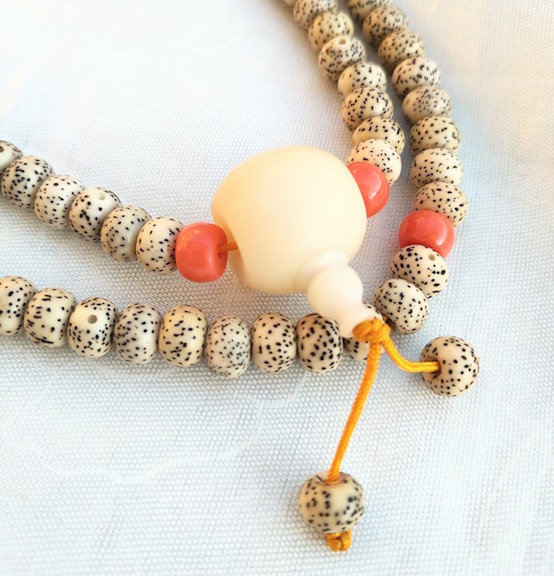
A long Tibetan mala from the Tibetan Nuns Project collection showing the guru bead. The guru bead has three stringing holes and here also has a smaller tower-shaped bead that holds the ends of the string.
The guru bead represents the relationship between the student and the guru or spiritual teacher. To use the mala, you start counting from the bead next to the guru bead. When you reach the guru bead again, it signifies the end of one round in the cycle of mantras.
Once you have completed a full circuit of the mala and reached the guru bead again, you reverse direction by flipping your mala. Then you continue again in reverse order. Most people believe that you do not cross over the guru bead as a sign of respect towards one’s spiritual teachers.
How do you hold and use a mala or prayer beads?
The mala is held with gentleness and respect, generally in the left hand. To use your mala, hold it with your left hand and begin to recite from the guru bead, clockwise around the mala, using your thumb to move the beads. Count one bead for each recitation of the mantra. The first bead is held between the index finger and thumb, and with each recitation of the mantra move your thumb to pull another bead in place over the index finger.
Why is the number 108 sacred?
The number 108 is sacred in many Eastern religions including Buddhism, Hinduism, and Jainism. In Tibetan Buddhism malas or rosaries are usually 108 beads plus the guru bead, reflecting the words of the Buddha called in Tibetan the Kangyur in 108 volumes.
How to care for your mala
Malas are sacred objects believed to be charged with the energy of the deity. They should be treated with great reverence.

An elderly nun at Geden Choeling Nunnery in Dharamsala, India gently holds her Tibetan mala. Photo courtesy of Brian Harris
As with all sacred objects, such as books and other spiritual instruments, one should keep malas off the ground. If your mala accidentally lands on the ground, you should touch it to the crown of your head and recite the sacred syllables Om Ah Hum, three times.
The mala should not be worn while bathing, or allowed to get wet, as this may weaken the cord on which the mala beads are strung. It is best to remove your mala before going to sleep so that you do not accidentally stress the cord and break it.
The nuns at Dolma Ling Nunnery and Institute also make and sell mala bags so that malas can be carefully protected.
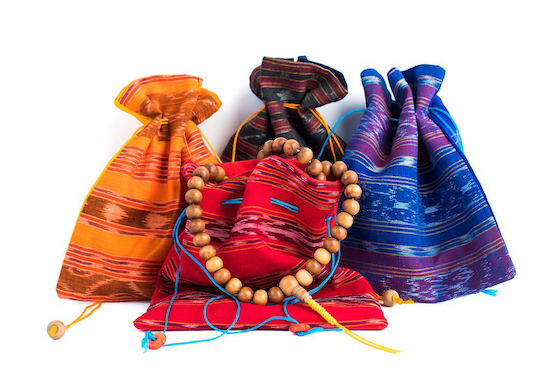
A selection of mala bags made by the nuns at Dolma Ling Nunnery. Our online store has a wide range of bags made from different fabrics and in different colors.
Choosing a Mala
You don’t have to be a Buddhist to wear a mala. The Tibetan Nuns Project has different kinds of long malas, each hand strung, knotted, and blessed by nuns at Dolma Ling Nunnery and Institute near Dharamsala in India. They are made from materials such as semiprecious stones, sandalwood, and bone and they range in price from $15 to $45.
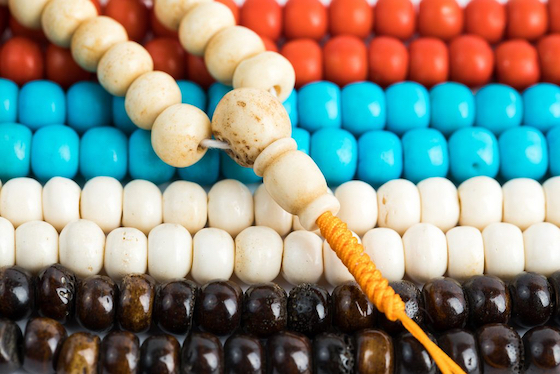
Assorted Tibetan Buddhist bone malas from the Tibetan Nuns Project
Long malas can be worn as a necklace or wrapped around your wrist. By purchasing these malas, you help provide the nuns with food, shelter, education, and health care – something you can feel great about every time you use your mala.
Our online store also has many types of wrist malas too, ranging in price from $11 to $22, and also made and blessed by the nuns at Dolma Ling. The wrist malas are approximately 6 inches (15 cm) in diameter and strung on elastic to fit most wrists.
Types of Malas
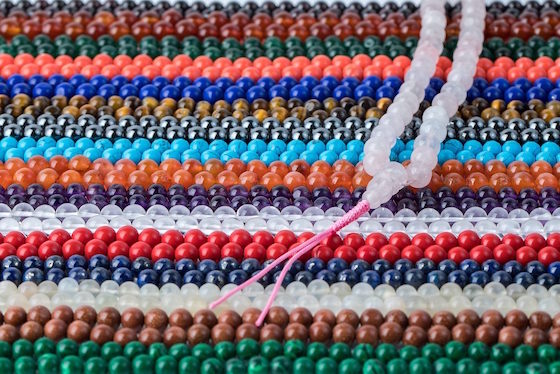
Our online store sells dozens of types of wrist and long malas, made of wood, bone, and semi-precious stones like amethyst, garnet, jade, and lapis.
Here’s a list of some types of malas and their special properties:
Amethyst is the stone of spirituality and contentment. It balances the energy of one’s intellectual, emotional, and physical bodies.
Garnet enhances internal fire and brings about creative power. It is helpful during feelings of abandonment and brings freshness to one’s life.
Granite helps with balance in relationships, fosters cooperative efforts and facilitates diplomacy. It helps increase wealth while allowing the recipient to remain modest.
Jade assists in dream analysis and grants the user a long and fruitful life. It helps with the transition from this body to the spiritual world.
Lapis provides objectivity, clarity, and mental endurance during times of realizing emotions. It also helps with creativity, organization, and with easing depression.
Malachite creates an unobstructed path leading to a desired goal and helps the user accept responsibility for actions and circumstances.
Moonstone fosters balance, introspection, and reflection. It helps deal with emotional, mental, physical, and spiritual changes, and helps in recognizing “ups and downs”.
Quartz amplifies body and thought energy. It also brings the energy of the stars to the body.
Rose quartz creates harmony and self-love during chaotic situations. It is the stone of gentle love and brings peace to relationships.
Sandstone builds and strengthens relationships and/or groups. It provides insight into deceit and encourages truth.
Tiger eye brings about clarity when dealing with scattered intellectual fragments. This stone is practical and grounding.
Turquoise heals the spirit with soothing energy and provides peace-of-mind. It holds both spiritual and protective properties, and balances the male and female aspects of one’s character.
Buying Mala Beads
The nuns buy from local Indian or Tibetan vendors for their beads. The beads are then hand strung and knotted into mala form. Once complete, the malas are then blessed by the nuns. We try to keep our prices reasonable so that our prayer beads can be accessed by everyone.

